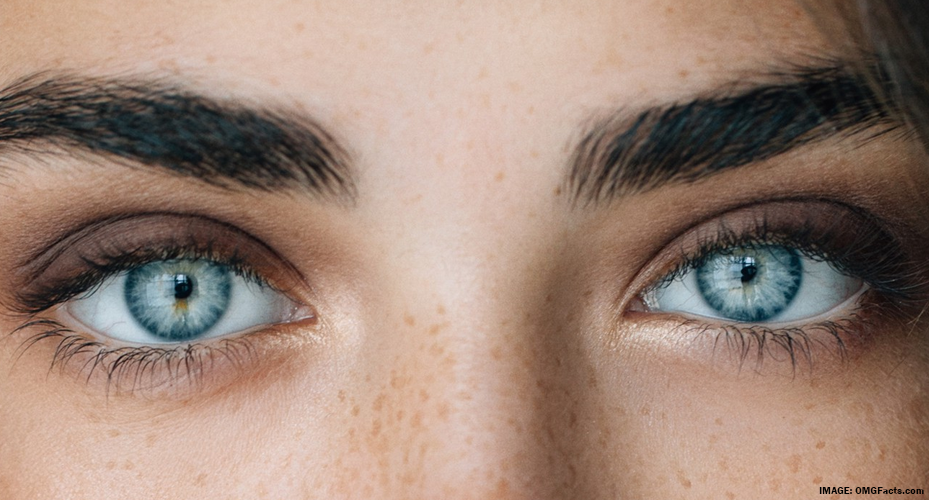

The allele that results in high levels of P-protein is linked to brown eyes. These alleles alter P-protein levels by controlling the amount of OCA2 RNA that is generated. Non-disease-causing OCA2 variants (alleles) have also been identified. These individuals have very light colored hair, eyes and skin. Individuals with OCA2 mutations that prevent P-protein from being produced are born with a form of albinism.

OCA2 produces a protein called P-protein that is involved in the formation and processing of melanin. The OCA2 gene, located on chromosome 15, appears to play a major role in controlling the brown/blue color spectrum. To date, eight genes have been identified which impact eye color. Irises from green–hazel eyes show moderate pigment levels and melanosome number, while brown eyes are the result of high melanin levels stored across many melanosomes (see figure two, left). Blue eyes contain minimal amounts of pigment within a small number of melanosomes. The range in eye color, from blue to hazel to brown (see figure one), depends on the level of melanin pigment stored in the melanosome “packets” in the melanocytes of the iris.


In humans, eye color is determined by the amount of light that reflects off the iris, a muscular structure that controls how much light enters the eye. (A previous Biotech101 article that provides an overview of comparative genomics can be found here.) figure one Others were discovered through comparative genomic studies of coat color in mice and pigmentation patterns in fish. A number of these genes have been identified from studying genetic disorders in humans. To date, scientists have identified over 150 different genes that influence skin, hair and eye pigmentation (an updated list is available at ). Some genes play major roles while others contribute only slightly. There are a number of genes involved in the production, processing and transport of melanin.
Light blue eyes skin#
The total amount of melanin is what determines the range of hair, eye and skin colors. The overall number of melanocytes is roughly equivalent for all people, however the level of melanin inside each melanosome and the number of melanosomes inside a melanocyte varies. Specialized cells known as melanocytes produce the melanin, storing it in intracellular compartments known as melanosomes. The color of human eyes, skin and hair is primarily controlled by the amount and type of a pigment called melanin. In a future edition, we’ll discuss genetic factors that contribute to skin and hair color. In this edition of Biotech Basics, we’ll explore the science behind pigmentation and discuss the genetics of eye color. Additionally, many of the genes involved in eye color also influence skin and hair tones. Unfortunately, this model is overly simplistic and incorrect – eye color is actually controlled by several genes. It’s one of the few genetic concepts that adults often recall from their high school or college biology classes. This would mean that two blue-eyed parents would always produce blue-eyed children, never ones with brown eyes.įor most of the past 100 years, this version of eye color genetics has been taught in classrooms around the world. They suggested that brown eye color is always dominant over blue eye color. In 1907, Charles and Gertrude Davenport developed a model for the genetics of eye color. This multifactorial model for eye color explains most of the genetic factors that influence eye color. However, other genes can override the OCA2 instruction, albeit rarely. One gene, OCA2, controls nearly three-fourths of the blue-brown color spectrum.The genes control the amount of melanin inside specialized cells of the iris. Today, scientists have discovered that at least eight genes influence the final color of eyes.Eye color was traditionally described as a single gene trait, with brown eyes being dominant over blue eyes.DNA provides the set of recipes, or genes, used by cells to carry out daily functions and interact with the environment.Scientists now realize such a model is overly simplistic and incorrect.
Light blue eyes pdf#
Download the PDF version of Biotech Basics: Genetics of Eye ColorĬountless students have been taught that a single gene controls eye color, with the allele for brown eyes being dominant over blue.


 0 kommentar(er)
0 kommentar(er)
